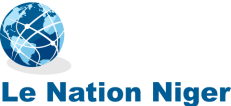Baringo: Kenya is steadily advancing in the implementation of the six tools and the regional initiatives responsible for combating the illegal exploitation of natural resources. Mining Principal Secretary (PS) Harry Kimtai stated that the six tools include the Regional Certification Mechanism, Harmonization of National Legislations, Regional Database on Mineral Flows, Formalization of Artisanal Mining Sector, Extractive Initiative Transparency Initiative, and Whistleblowing Mechanism.
According to Kenya News Agency, during a meeting of the International Conference on the Great Lakes Region (ICGLR) secretariat, Kimtai emphasized Kenya’s progress in strengthening its legal and regulatory framework and the commencement of efforts to formalize the artisanal and small-scale mining sector. Kimtai noted that illegal exploitation of natural resources has been a significant factor in fueling conflicts, undermining governance, and impeding economic growth in the region.
The PS highlighted that the six tools against illegal resource exploitation provide a comprehensive framework for addressing these challenges. He stressed the importance of operationalizing the tools and ensuring their integrity to strengthen their impact. Kenya is actively aligning with the standards and is committed to developing robust systems for monitoring and tracing mineral flows across the value chain.
Kenya is keen to initiate the implementation of the regional certification mechanism, a cornerstone and critical measure for enhancing transparency, traceability, and accountability in the mineral sector. Kimtai mentioned that Kenya will seek technical support from the ICGLR secretariat for the effective and timely rollout of these initiatives.
ICGLR Executive Secretary Amb. Joao Samuel Caholo pointed out that access to land and resources is a root cause of cyclic conflict in the Great Lakes Region. He recalled a 2010 summit where regional heads of state declared the initiative and protocol to address mineral access challenges. Caholo noted that so far, the regional certification mechanism has been implemented by five member states, and efforts are ongoing to include additional states.
Caholo stressed the importance of creating a mineral database for traceability and transparent management, allowing for the identification of mineral sources. He revealed that the minerals database program has been revamped and is operational, with modest satisfaction among member states regarding the implementation of the tools.
According to Amb. Caholo, the secretariat is making deliberate efforts to promote the formalization of artisanal small-scale miners in the Great Lakes Region.
